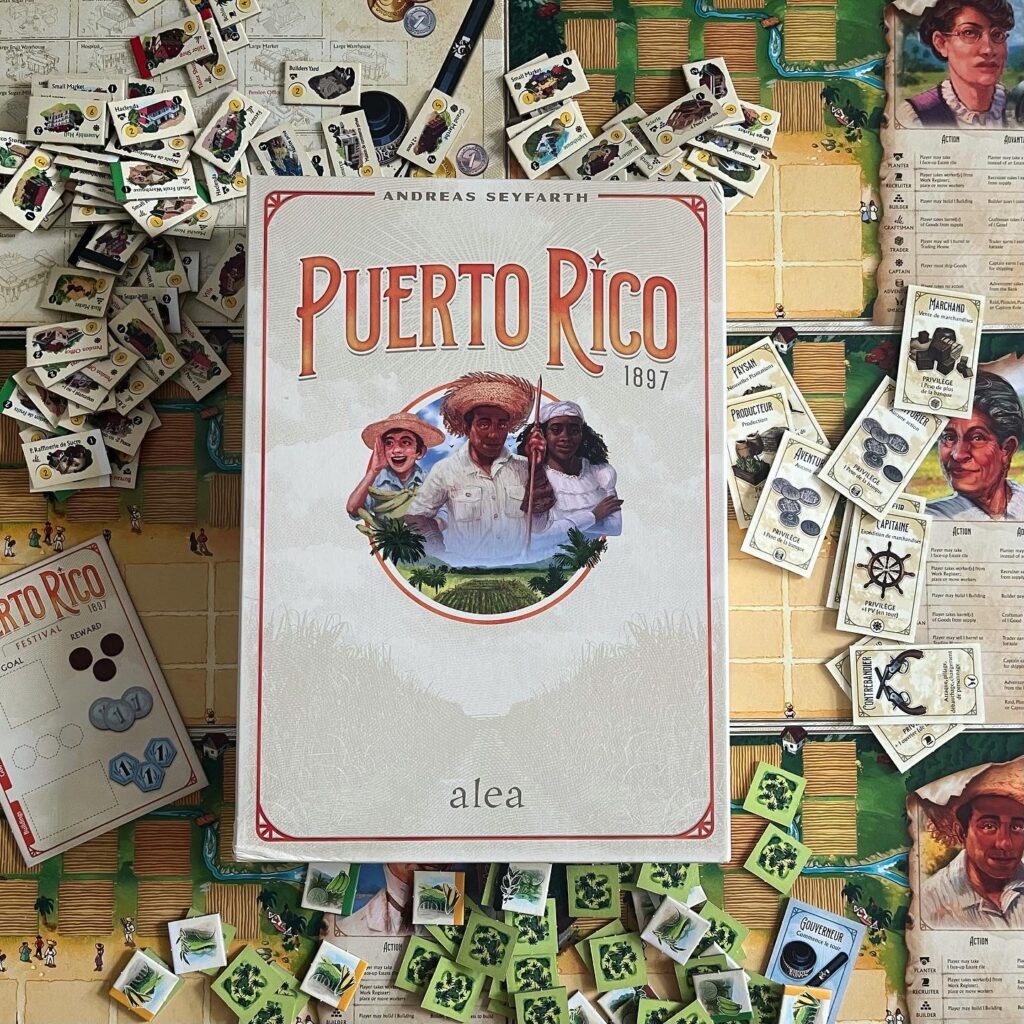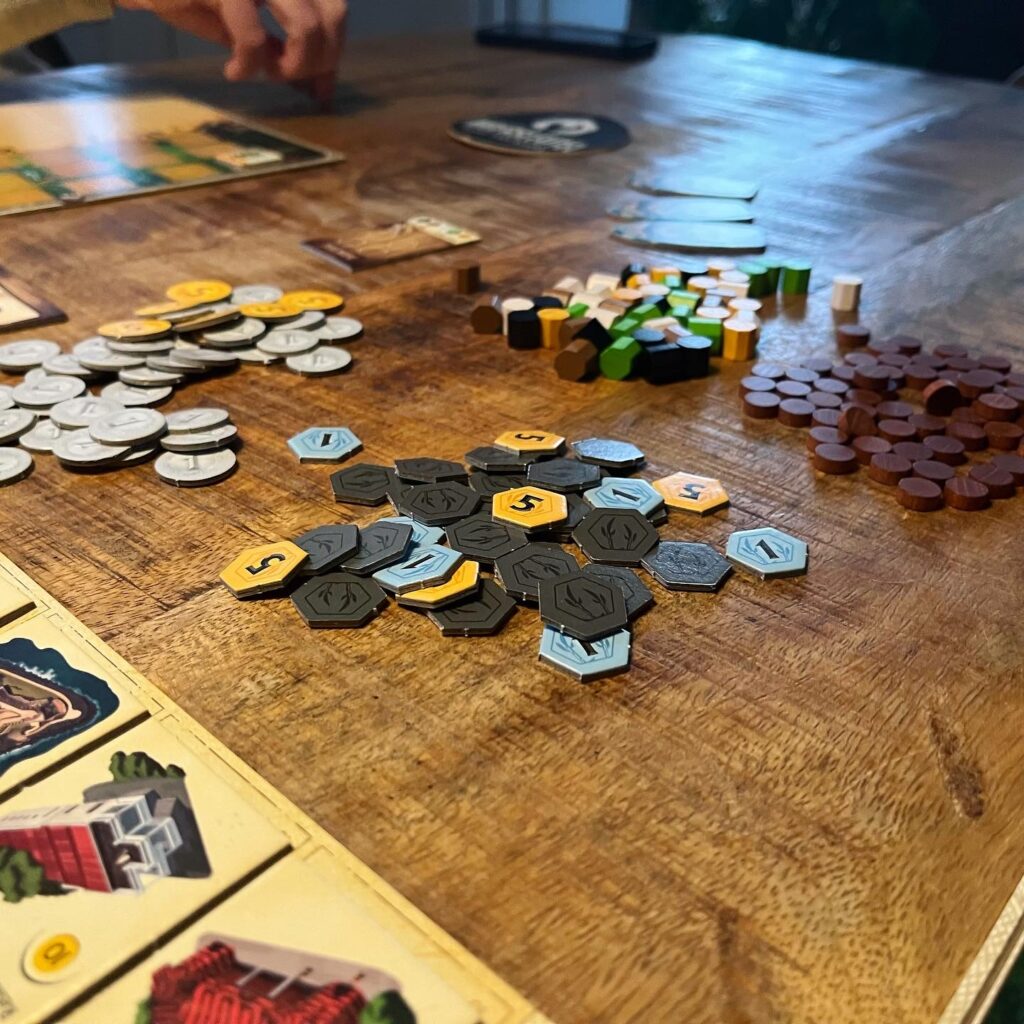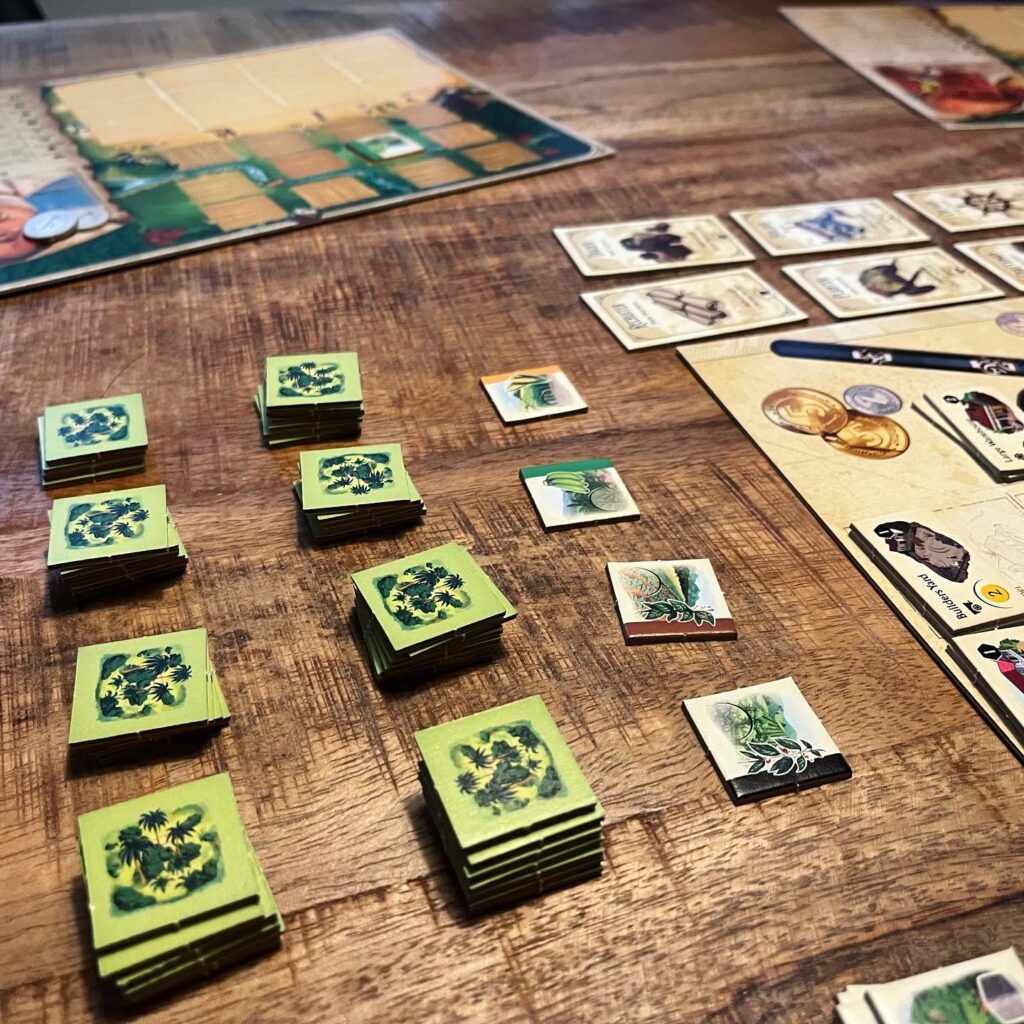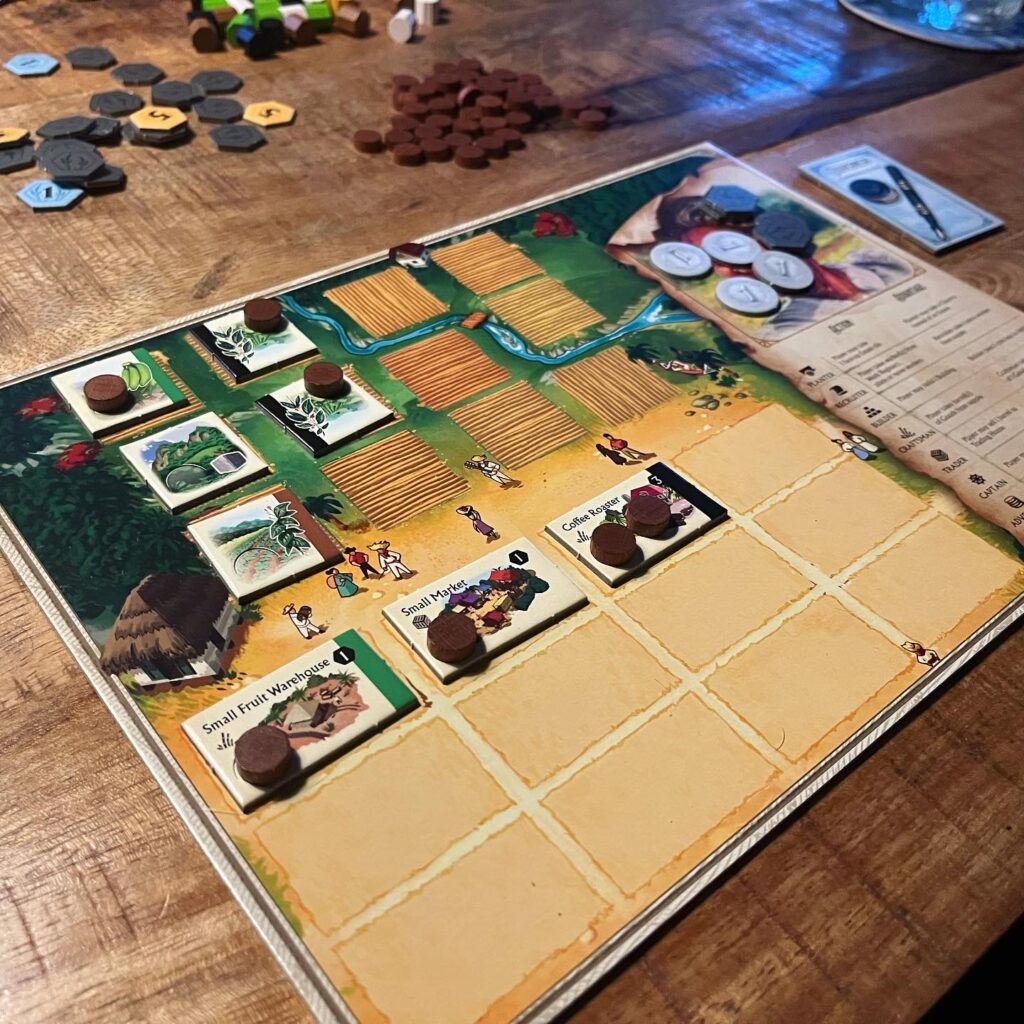Puerto Rico is independent! Now it is up to local farmers to work their reclaimed land with free workers and accumulate wealth in the year 1897 – the year after the island’s limited political independence (which, by the way, was only short-lived).
Background and goal
Puerto Rico is a popular, strategic and now classic board game set in Puerto Rico’s colonial past. Due to new insights, somewhat increased empathy and improved historical awareness, this theme – incidentally past and still immensely popular for strategic games – has become somewhat more controversial and sensitive in recent years. The year in the new edition Puerto Rico 1897 speaks (history) volumes (as it is the year after Spain’s partial and short-lived political independence). In fact, the original game was set in the 16th century, and in that game players actually took on the role of a plantation owner in an era when slavery had not yet been abolished. While the game itself is very good and considered by many spleers to be one of the best “eurogames” ever, it was perhaps time for a new lick of paint and a more sensitive approach.

In Puerto Rico 1897, players take on the roles of local farmers and their employees on independent farms. The game is richly illustrated – compared to the fairly classic gradient art with simple illustrations of the original game – and the gameplay has been somewhat streamlined in some aspects, and the game includes new modules and additional elements for some extra variety for newcomers and returning players.
So players take on the role of local farmers in Puerto Rico, and each player tries to set up the richest farm on the island. Each round, each player chooses a role, such as mayor, builder or captain, to perform actions during their turn to harvest resources, build buildings and ship goods to other countries. For shipped goods and specific buildings, players receive points that they keep hidden from the other players. The player with the most victory points at the end of the game wins.
Setup
At the beginning of the game, players receive a personal player board on which they will build their buildings and farm. In the middle of the table, the central game board is placed with all the different stacks of building tiles that will be used during the game. Sorting, picking and placing the different tiles is still quite a job, so start setting up on time and perhaps make sure you have selected the tiles beforehand. In a central supply, the various resources, workers and coins are placed.
Next to the central game board, players place the various roles (larger tiles) used during the game, ship tiles where players will place goods to ship, a trade board and the various plantation tiles (with crops, mines and the like).
Gameplay
During each round of Puerto Rico (1897), each player in turn chooses one of the available roles by taking one of the role tiles Once the role is chosen, each player in turn may perform the action associated with the role (described in more detail below). Each player may thus do the action, so players have influence over the actions players perform during the game, but only the player who chooses the action also receives a privilege associated with the role. Namely, the player who chose the action gets a bonus, a slightly better version of the action or perhaps even a special action or attribute.


Any role not chosen during a round gets a doubloon on the tile at the end of the round. That player who chooses this role during a subsequent round also gets the doubloon or doubloons present on this tile. This of course invites you to choose a role, because with doubloons you can buy new buildings (for example). After a round, the next player starts choosing roles first and this continues until the game ends.
- Planter: With the planter, players can take new available plantation tiles or quarries from the supply and place them on their personal player boards to gain resources later.
- Recruiter: The recruiter allows players to choose workers to work on their fields or buildings. This allows plantation tiles to be used on fields and buildings to be utilized.
- Builder: The builder role allows players to build new buildings by paying the associated costs. Buildings offer various benefits such as producing goods, earning money or points or providing special properties.
- Captain: The Captain allows players to load goods onto ships and n, earning victory points for each type of goods they ship. The number of goods you can ship depends on the size of the ship. Each ship offers space for only one type of good, and players must share the space. By loading ships you can block or give space to other players depending on the goods they have.
- Craftsman: The Craftsman role allows players to produce goods on their plantations and quarries. Each plantation can produce a certain type of goods, such as corn, indigo, sugar, tobacco or coffee. These goods players can ship for victory points or trade for money.
- Trader: The Trader allows players to sell their goods for money by adjusting the prices of goods based on supply and demand.
- Adventurer: The Adventurer provides money, but otherwise has little meaning and is especially useful if a player is tight on cash.
In addition to these roles, Puerto Rico 1897 offers a module with an additional role: the smuggler. There are also other modules with new buildings and game variants.
Conclusion
Puerto Rico is technically pleasing and elegantly put together and it is understandable why this modern classic is still loved by the strategic frequent player. It may contain a theme we are quite used to is board games, but the game play is, through the choice of different roles – interactive and dynamic. Players try to choose their roles so that they will achieve their own strategy and goals, but try not to give their opponents a chance. Sometimes it is better to choose a role or not.



An earlier print run of this reissue (including this review copy) had some quality control issues (too few resource tiles to give an example as well as very limited information included on the English version of the building tiles), but the visual quality is significantly better than the original version. The cardboard is still thin, but the game puts together just fine, and the extra parts add (such as specific buildings and extra role) add welcome variety.
The gameplay is interesting and the mechanics are very well balanced and as a result this game is rightfully considered as a classic.




